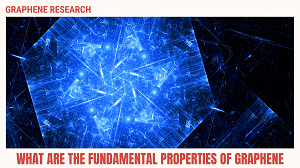08062023 Editorials GRAPHENE RESEARCH:
- What are the fundamental properties of GRAPHENE
- How is GRAPHENE developed and refined
- What are the characteristics of GRAPHENE
- Can GRAPHENE be incorporated into other materials
- Where is GRAPHENE used in the BIO-MEDICAL domain
The SCIENCE DAILY quoted, ‘GRAPHENE is made up of carbon atoms that each have three neighbours, arranged in the well-known ‘honeycomb’ structure. It is this special structure that lends GRAPHENE its unique mechanical and electronic properties.”
This miraculous material had won the NOBLE PRIZE in PHSSICS, in 2010 to ANDRE GEIM and his partner KONSTANTIN NOVOSELOV who introduced GRAPHENE to the world in 2004. However, there is widespread research being made on this path-breaking discovery to understand the intricacies of GRAPHENE.
“GRAPHENE research predominantly refers to the scientific investigations conducted to study the properties, synthesis methods, characterization techniques, and potential applications of GRAPHENE.
Researchers across various scientific disciplines, including physics, chemistry, materials science, and engineering, are involved in GRAPHENE research. The primary focus of GRAPHENE research can be broadly categorized into the following areas:
Fundamental Properties: Researchers study the fundamental properties of GRAPHENE to understand its unique characteristics and behaviour. This includes investigations into its electrical, thermal, mechanical, and optical properties. Scientists aim to uncover the fundamental principles governing GRAPHENE’s behaviour at the atomic and electronic levels.
Synthesis And Production: GRAPHENE research involves the development and refinement of various synthesis methods to produce high-quality GRAPHENE. Different techniques such as mechanical exfoliation, Chemical Vapour Deposition (CVD), epitaxial growth, and chemical reduction are explored to obtain GRAPHENE in large quantities and high quality. Researchers also investigate the scalability and cost-effectiveness of GRAPHENE production methods.
Characterization And Analysis: GRAPHENE’s properties and structure are thoroughly characterized using advanced microscopy, spectroscopy, and other characterization techniques. Researchers employ tools like scanning tunnelling microscopy (STM), atomic force microscopy (AFM), Raman spectroscopy, and transmission electron microscopy (TEM) to study the atomic structure, defects, layer stacking, and other properties of GRAPHENE.
Device Fabrication And Electronics: GRAPHENE’s exceptional electrical conductivity and other properties make it a promising candidate for electronics and device applications. Researchers explore GRAPHENE-based devices such as transistors, interconnects, sensors, and flexible electronics. They investigate methods to integrate GRAPHENE into existing electronic platforms and develop novel GRAPHENE-based electronic components.
Energy Storage And Conversion: GRAPHENE’s high surface area, electrical conductivity, and chemical stability make it a suitable material for energy storage and conversion applications. Researchers explore the use of GRAPHENE in super-capacitors, batteries, fuel cells, and solar cells to enhance energy storage and conversion efficiency.
Composite Materials: GRAPHENE can be incorporated into other materials to create graphene-based composites with improved properties. Researchers investigate the mechanical, thermal, and electrical enhancements achieved by adding graphene to polymers, metals, ceramics, and other matrices. These GRAPHENE composites have potential applications in various industries, including aerospace, automotive, and construction.
Biomedical Applications: GRAPHENE’s biocompatibility and unique properties make it promising for biomedical applications. Researchers explore GRAPHENE’s potential in drug delivery systems, biosensors, tissue engineering, and bio-imaging. They investigate the interactions between GRAPHENE and biological systems to ensure safety and efficacy in medical applications.
GRAPHENE research is a rapidly evolving field, and scientists around the world continue to make new discoveries, uncovering the full potential of GRAPHENE and paving the way for its commercialization and practical applications in diverse industries.”
Please like our pages: on Facebook & LinkedIn. #Way2World brings #StartUpNews from #StartUpResources about #StartUpFounders, #Co-Founders, #WomenEntrepreneurs, #WomenLeaders, #StartUpMentors, #StartUpInnovation #StartUpIncubators, #StartUpAccelerators and #StartUpListing. The #StartUpArticles, #StartUpReviews and #StartUpStories discuss #StartUpFunding, #IndianStart-Ups their #BusinessServices along with #StartUpName and #technologyimpactness. With Inputs from the Internet – RajKishan
DISCLAIMER: The above news item is provided for informational purposes only and does not constitute professional advice, legal opinion, or endorsement by WAY2WORLD. The accuracy, completeness, or timeliness of the information contained in this news item cannot be guaranteed. WAY2WORLD or its affiliates shall not be held liable for any errors, omissions, or damages arising from the use of the information provided. Readers are advised to verify the information from multiple sources and seek professional advice before making decisions based on the content of this news item. The views and opinions expressed in this news item are those of the author(s) and do not necessarily reflect the views of the publisher or its affiliates. WAY2WORLD does not endorse or promote any specific product, service, or organization mentioned in this news item unless otherwise stated. Readers are encouraged to use their discretion and judgment when interpreting and applying the information provided in this news item.

